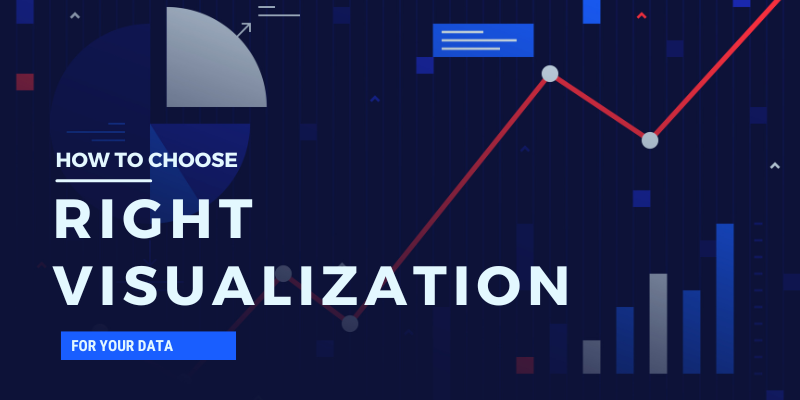We offer a range of IT services including network setup and maintenance, server management, cloud computing, cyber security, software development, web/application development and maintenance, development /database maintenance, technical assistance, etc. Contact us for more information.
- contact@idealthinktech.com
- 201-5 Wesleyan St, GeorgeTown, ON-L7G 2E2
Blog Details

How to choose right visualization for your data
Datavisualization is a powerful tool to help you better understand complex information and make informed decisions. However, choosing the right visualization for your data can be challenging, especially with so many options available. In this post, we'll explore the different types of visualizations and provide tips for selecting the most appropriate one for your data.
Types of visualizations
1. Bar Chart
Bar charts are a simple yet effective way to display numerical data. They are ideal for comparing values across different categories or time periods.
2. Line Chart
Line charts are similar to bar charts, but they show trends over time rather than comparing values across categories. They are ideal for showing changes in data over a period of time.
3. Pie Chart
Pie charts are a popular way to display proportions. They are ideal for showing how a whole is divided into its parts.
4. Scatter Plot
The relationship between the two variables is displayed using scatter plots. They are ideal for identifying patterns and trends in data.
5. Heat Map
Heat maps are used to show patterns in data by color-coding them based on their values. They are ideal for visualizing large datasets and identifying trends.
6. Tree Map
Treemaps are used to display hierarchical data. They are ideal for showing the relative sizes of different parts of a whole.
7. Bubble Chart
Bubble charts are similar to scatter plots, but they include a third variable that is represented by the size of the bubbles. They are ideal for showing relationships between three variables.
Tips for Choosing the Right Visualization
1. Consider the type of data you have
The type of data you have will influence the type of visualization you choose. For example, numerical data is best displayed using bar charts or line charts, while hierarchical data is best displayed using tree maps.
2. Consider the message you want to convey
Consider the point you want to make with your data. Do you want to show trends over time or compare values across different categories? This will help you choose the most appropriate visualization.
3. Keep it simple
Avoid using complex visualizations that may confuse your audience. Stick to simple visualizations that clearly convey your message.
4. Use appropriate colors
Colors can enhance or detract from your visualization. Use appropriate colors that are easy on the eyes and accurately represent your data.
5. Test and refine
Test your visualization with a sample audience to see if it conveys your message effectively. Refine your visualization as needed to improve its effectiveness.
Conclusion
Choosing the right visualization for your data can be challenging, but it's important to select the most appropriate one to convey your message effectively. Consider the data type you have, and the message you want to convey, and keep it simple. By following these tips, you can create effective visualizations that enhance your understanding of complex information.

